
HiTech Termite Control in a Nutshell
HiTech Termite Control use today’s most advanced technologies to control and eliminate termite problems.
Hi Tech's microwave technology is clean and efficient. Microwaving in conjunction with state registered chemicals, such as non-repellant Termidor, to treat drywood and dampwood termites and power powder post beetles. For subterranean termite control, HI TECH uses non-repellant termidor for prevention of future infestations, Hi Tech uses Timbor which is sprayed on bare wood in attics and crawl spaces.
Furthermore we offer a three year, full structure warranty with our primary and secondary treatment termite services covering all species of termites and wood boring beetles.
Work is quick and easy Simply stated, microwave energy converts to heat that kills termites and beetles infesting the wood. Heat is generated by a magnetron head mounted on a tripod for easy access to floors, walls and ceilings. The magnatrons funnel-shaped wave guide directs microwaves to the infested area, penetrating the wood and killing the termites.
Non-Fumigation Termite Control
Fumigation Termite Control
Termite Damage Repair
Pre-Treatment
Escrow inspections
Call HITECH Termite Control of the Bay Area Today!
Serving: San Jose • San Francisco • Santa Clara • Pleasanton • Oakland
What our Customers Say About Us
Products / Services
Non-Fumigation Termite Control
Fumigation Termite Control
Microwave Termite Treatments
Termite Damage Repair
Pre-Treatment
Escrow inspections
Read our Recent Articles
Is There Such a Thing as Comprehensive Termite Prevention?
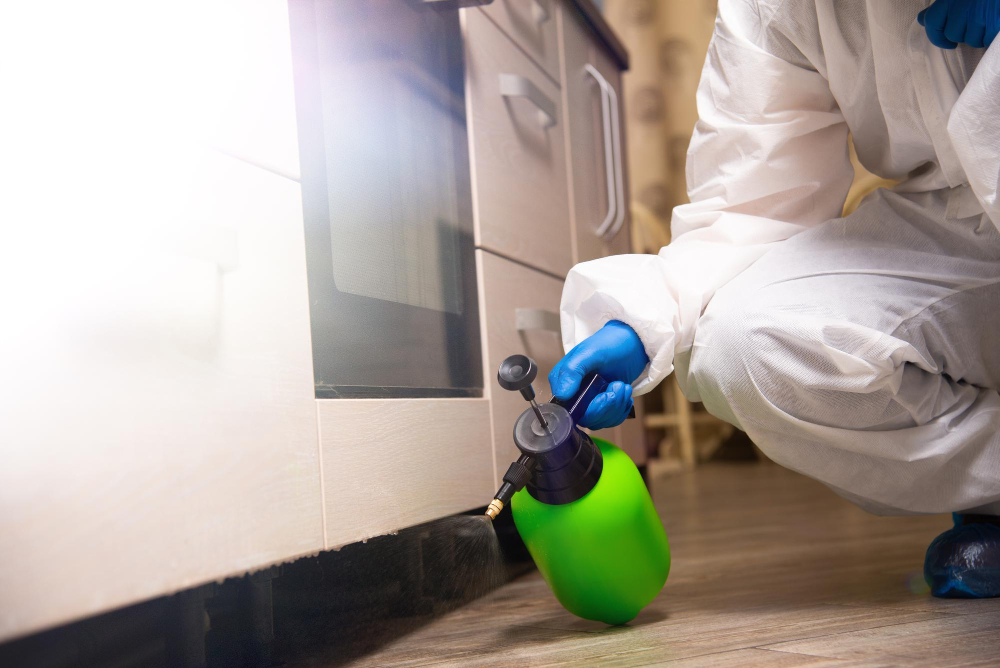
For most families, their house is a huge financial asset. Protecting it is paramount to the family’s safety and future. People go for homeowners’ insurance, with various levels of coverage, to protect their investment.
Landscaping Tips for Better Moisture Control and Termite Prevention
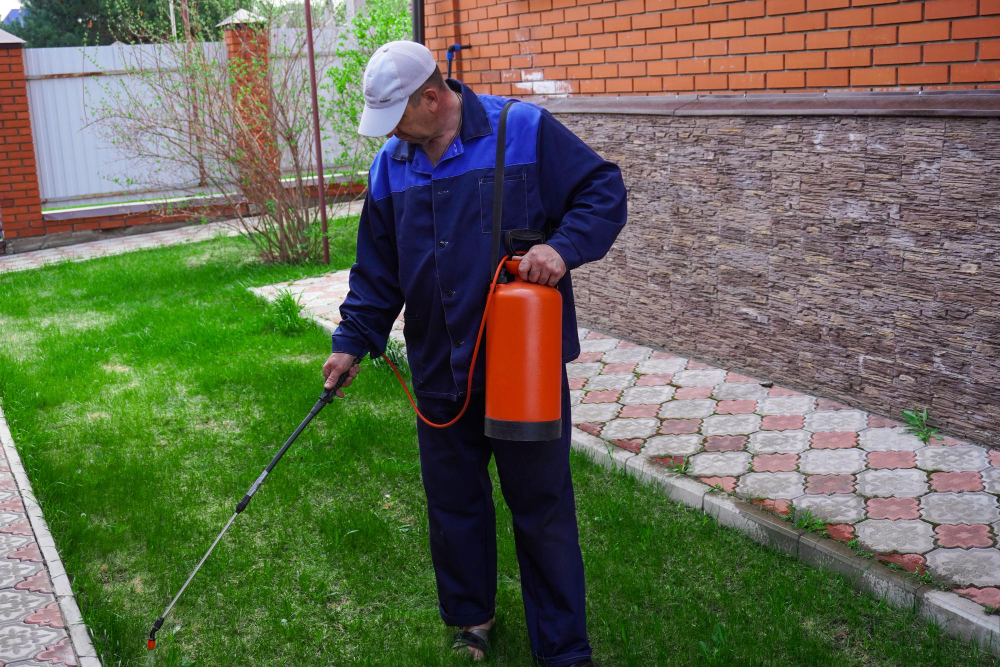 According to the National Pest Management Association (NPMA), a single termite colony can consume a pound of wood in a day. Surprisingly, these tiny crawlies can be this destructive! Landscaping your yard might seem an aesthetic choice but it determines how well your home holds up against pesky problems like moisture and termites.
According to the National Pest Management Association (NPMA), a single termite colony can consume a pound of wood in a day. Surprisingly, these tiny crawlies can be this destructive! Landscaping your yard might seem an aesthetic choice but it determines how well your home holds up against pesky problems like moisture and termites.
A Guide to Prevention of Drywood Termites
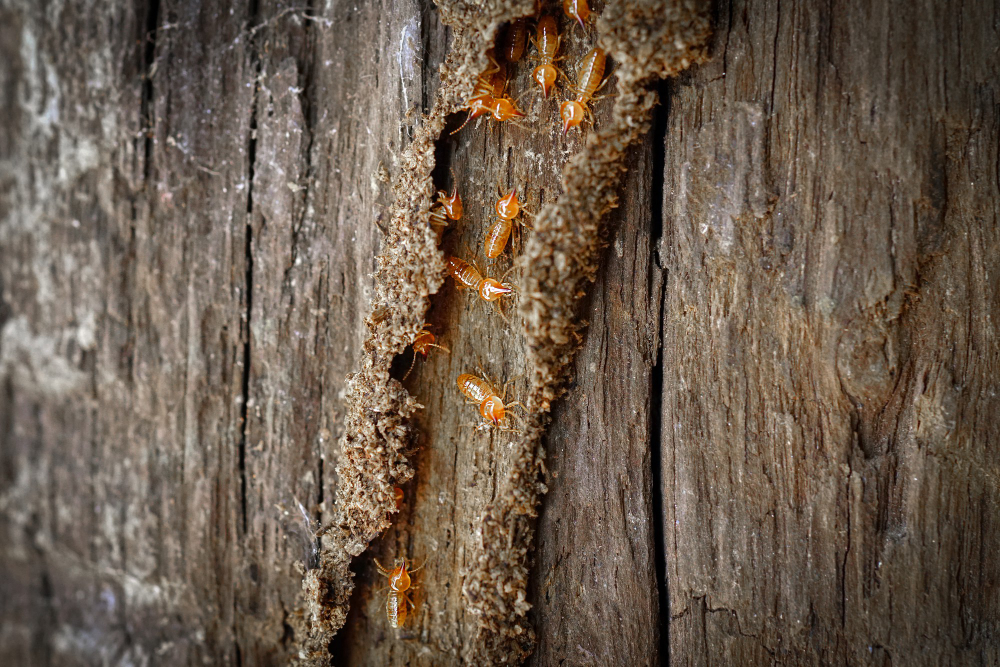
Drywood termites are silent invaders, capable of wreaking havoc without leaving any obvious signs until it’s too late. Unlike subterranean termites that require soil contact, drywood termites thrive directly inside the wood they feast on, thus making your furniture and wooden structures the perfect target.
Top 5 Subterranean Termite Treatment Methods: Which One is Right for You?
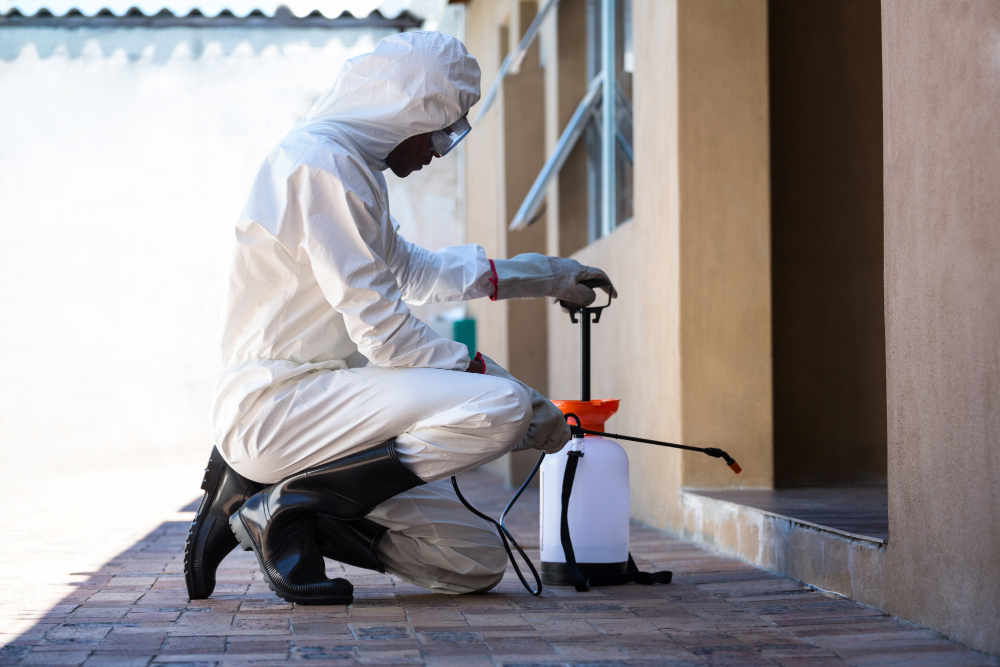 According to the U.S. Department of Agriculture, $1 billion in home repairs is needed annually due to termite damage. While the termites are voracious eaters, they are also sneaky making it hard to detect the damage in the early stages. In this blog, we have compiled a list of subterranean termite treatments, and their advantages and limitations, so you can choose the best that suits your needs.
According to the U.S. Department of Agriculture, $1 billion in home repairs is needed annually due to termite damage. While the termites are voracious eaters, they are also sneaky making it hard to detect the damage in the early stages. In this blog, we have compiled a list of subterranean termite treatments, and their advantages and limitations, so you can choose the best that suits your needs.
Frequently Asked Questions about our Products / Services
How can I prevent a termite infestation?
The later a termite infestation is spotted, the higher the damage that will have occurred, and the larger the number of the pests. Regular professional termite inspections followed by the appropriate preventive treatments are the only way to keep a home termite-free. The adage of prevention being better than cure is very relevant to termite infestations.
How do I know I have termites?
There are four (4) species of wood-destroying pest in Northern California. Drywood, Subterranean, Dampwood Termites and Powder Post Beetles. Drywood termites are the most common termites found About 78% of structures inspected each year are infested with this type. Subterranean about 26% and dampwood and powder post beetles are about 2%. Drywood termites leave piles of droppings or pellets near their nest. They also swarm on warm days leaving the nest to breed. Swarmers look like red ants with wings. Actually they have a red head and long brown body. Subterranean termites are ground dwelling and build tubes to access their food. Look for mud tubes or swarmers in the spring months. Subterranean swarmers look like small black water ants with wings. The easiest way to identity flying ants from termites is to check the insect’s wings. If the wings are short stubby and end at the rear end of the insect, it is a flying ant. If the wings are long, tear-shaped and twice the length of the insect, it is a termite. Also hollow wood is very good indication.
Read more FAQs here: www.hitechtermite.com/faqs.html
What attracts termites in the house?
Termites feed on cellulose, which is wood, paper, plant products like leaves, some vegetables, etc. If anything that termites eat is in a house, and accessible to them, they will find a way to reach the material and consume it. Termites may be tiny, but they have voracious appetites and the strength and perseverance to find their way to where the consumable material is, even if the human occupying the house think they have kept it out of termite reach. If you are finding termites in your home, the only way to be sure of getting rid of them and protecting the house is to have termite removal done by a professional termite control company that will provide you with a warranty on its services.
Is pest control harmful? How do I get rid of termites safely?
Pest control should be harmful only to the pests, not the humans or pets living in the home. DIY pest control methods are both ineffective and potentially harmful to the occupants of the home, which is why they can be so dangerous. To be sure of total elimination of the pests and the safety of the home and those living in it, use the service of a professional pest control company that offers a warranty on its services.
How can I get rid of swarmer termites?
My home suffered a swarmer termite infestation some years ago. A local handyman did some treatment for me and it seemed that the termites were removed. It was only later I found that they had only been driven deeper into the woodwork and continued to cause damage. It was only when rotten wood was appearing all over the house that I knew they were still there. The repairs cost me a huge amount and after that, I use only a professional termite control company that gives a warranty on its services.
How can I make my home impenetrable to insects or animals of any type?
If you are someone who wishes to keep their office or home in perfect condition, it is best to get pest control annually or half yearly. This ensures that your property remains in optimal condition all through the year. Call us now at (888) 322-8889 or send an email to info@hitechtermite.com, and we will get into action right away.
How frequently should I get my house checked for any pests?
If you are someone who wishes to keep their office or home in perfect condition, it is best to get pest control annually or half yearly. This ensures that your property remains in optimal condition all through the year. Call us now at (888) 322-8889 or send an email to info@hitechtermite.com, and we will get into action right away.
What are the signs of termite infestation?
Sometimes, the termites in your house can be difficult to find out. It becomes important to detect termites as soon as possible to avoid damage. Some of the signs of termites in your home include damaged wood, windows that are difficult to open, termite droppings, wall damage, discoloured walls, etc. The best way to safeguard your home from any structural damage is to get good termite treatment
What is the most effective treatment for termites?
Termites act as a hindrance to the structural integrity of your home. If you realize that there are termites in your home, you should comprehend the level to which the infestation has advanced and then treat them appropriately.
Some of the most effective treatments for termites include the following: 1) liquid soil-applied termiticide, which requires digging a trench 2) termite baits wherein bait stations are carefully placed around the termite areas. 3) wood treatments which include surface sprays.
What are the signs of termites in your house?
It depends on the type of termites. If they are flying ones, there may be discarded wings and dropping on window sills and other points of entry. Other types of termites may leave droppings or small piles of sawdust around where they are. Spotting the signs of a termite infestation is not easy for those who have not been trained in what to look for – the signs are easy to miss. It is better to use a professional termite control company to do a termite inspection. If any termites are found, they will be removed and the best companies offer a warranty on their services, so the home remains safe in the future.
How often should I treat my house for termites?
There is no definite answer to this question. Various factors influence the frequency at which termite treatment is required. These include whether the area is prone to termite infestation, the type of termites, how effective the previous removal was and how long the protection will last, etc. The best way to keep your home safe is to have a termite inspection and treatment done by a professional termite control company that will give you a multi-year warranty on its services so that your home remains protected.
Can I treat for termites myself?
You can, but you will be putting your home at risk. Termite infestations are difficult to spot and if allowed to remain, will do a huge amount of damage. If the infestation is spotted, ensuring that it is completely removed requires expert knowledge and experience. DIY termite control can never keep your home truly safe. Only professional termite control will do that.
What is a king termite?
King Termites are important to the growth and development of a termite colony, although their exact function and role are still being argued. What is known is that the king and queen mate to produce termites to populate a colony. The king can often be distinguished by his darker color, as he is the same size as other termites. It is the queen that grows to become much larger than the rest of the nest. When it comes to termites, they must all be removed to keep a home safe. At HiTech Termite Control we do this by using the right termite control method which is dictated by the size of the infestation and environmental factors. We also give a 3-year full structure warranty on our services so our customers remain safe in the future.
Do termites come out after treatment?
Some species of termites may come out after treatment if their nest is disturbed. Treatment methods that use heat, cold, or moisture can disturb the nest and cause them to come out. However, most termites will stay hidden in their nests and continue to damage the wood even after treatment.
It's important to hire a professional for termite extermination who knows how to properly treat your home and identify the species of termites infesting your home. Termites can be difficult to get rid of once they've become established, so it's best to address the problem as soon as you suspect there is one.
How to inspect your home for termites
There are a few things you can do to inspect your home for termites. First, take a look at the exterior of your home and look for any signs of damage or decay. This could be things like holes in the siding or wood, or sawdust around the foundation. Second, go inside and check for any signs of termites there. This could include things like damaged woodwork or walls, or Swarmers wings near doors and windows. Third, call a professional termite control company to come and do a thorough inspection of your home. They will be able to tell you for sure if you have termites and what kind of treatment options are available.
Do termites come back after treatment?
Yes, termites can come back after treatment, but it is not common. If you have your home treated for termites and they do come back, it is usually because the treatment was not effective in the first place. There are new treatments available that are much more effective than older methods, so if you're concerned about termites coming back after termite treatment, be sure to ask your exterminator about the latest and most effective methods available.
What is the best solution for termites?
Being a professional termite control company, we offer a full range of termite solutions, tailored to meet the requirements of different types of infestation and the specific needs of our clients. There is no single “best” solution. The best results come from having the expertise to understand the nature of the problem and apply the right control methods. That is what we do and we back up our work with an industry-leading 3-year full structure warranty.
What does a termite infestation look like and how to fix it
If you have a termite infestation, you will likely see small piles of termite droppings that look like sawdust. You may also see evidence of termites such as wings or mounds of soil. To fix it, you will need to call in a professional exterminator.
What is the best treatment for termites?
There are a few termite treatment methods that are commonly used. One is to use a liquid insecticide that you pour into the ground around the perimeter of your home. This will kill any termites that are trying to enter your home. Another option is to use a bait system. The bait system involves putting poison in wooden stakes and leaving them in the ground around your home. The termites will eat the wood and then die. A third option is to use foam insulation to fill in any cracks or holes in your home where the termites might be entering. This will prevent them from getting inside.
What is termite infestation?
A termite infestation is an infestation of termites in a building or other structure. Termites are small, winged insects that live in colonies in the soil. They feed on wood and can cause extensive damage to buildings and other structures.
What Are the Common Causes of a Termite Infestation?
Termite infestations are high in regions where termites abound. That said, the presence of moisture, exposed, rotten and untreated wood, and other cellulose-based materials, along with other factors contribute to the development of termite infestations. The only way to effectively protect a home from a termite infestation in Bay Area is to have professional termite control done by a company that offers a long-term warranty on its services so the homeowner can relax knowing his property is safe.
What does termite damage look like?
By the time termite damage becomes visible, it has usually reached an advanced stage. That is because termites eat wood from the interior to the exterior. The signs of termite damage include wood that sounds hollow when tapped, cracking and flaking surface areas, sawdust around wooden structures and furniture, etc. It takes an expert to be able to spot signs of termite damage – often the indications are so subtle a layman will not notice them. If you suspect this kind of damage, contact HiTech Termite Control, experts in termite damage repair in Bay Area.
What does non fumigation mean?
Non-fumigation termite control is the use of physical barriers to keep termites from entering a building, or the use of chemical barriers to kill termites. Physical barriers include metal sheeting around the foundation of a building, and chemical barriers can be in the form of a liquid or solid that is applied to the soil around a building.
Non-fumigation termite control is often used when there is no way to fumigate an area for fear that the chemicals could harm people or pets. Chemical barriers are less likely than fumigation to completely get rid of all the termites in an area, but they are much safer than fumigation.
What is the fastest way to get rid of termites?
The fastest way to get rid of termites is to hire a professional termite company. They have the experience and equipment necessary to quickly and efficiently identify and treat the infestation. A professional company will also be able to determine the type of termites present and choose the most effective treatment option. They will also be able to provide ongoing monitoring and maintenance to ensure that the infestation does not return. Hiring a termite company will be the best and fastest way to get rid of termites, but it's important to get several quotes and check their reputation and certification.
How to choose a termite company?
Choosing a termite company can be an important decision for protecting your home from termite damage. Here are some factors to consider when selecting a termite company:
- Reputation: Look for a company with a good reputation in your local community. Read reviews and ask for referrals from friends or family members who have had a positive experience with a termite company.
- License and insurance: Verify that the company is licensed and insured to provide termite control services in your state.
- Experience and expertise: Look for a company with experienced technicians who are knowledgeable about the latest termite control methods and treatments.
- Treatment options: Choose a company that offers a range of treatment options, including both chemical and non-chemical treatments, so that you can find the best solution for your specific needs.
- Guarantee: Look for a company that offers a guarantee on their work and stands behind their services.
- Customer service: Choose a company with good customer service that is responsive to your questions and concerns.
- Price: While price should not be the only factor in your decision, it is important to compare prices and ensure that the company provides a fair and transparent pricing structure.
By considering these factors, you can select a reliable and trustworthy termite company to help protect your home from termite damage.
How to prevent drywood termites?
Preventing drywood termites starts with identifying and addressing potential sources of moisture, such as leaks or excess humidity in the home. Additionally, it is important to seal any cracks or crevices in the structure and keep wood away from the foundation. Regular inspections can help detect termite activity early, allowing for prompt treatment. Some effective termite prevention methods include using pressure-treated wood for construction, installing termite barriers or screens, and applying wood sealant or paint to protect against moisture. Homeowners can also reduce the risk of termite infestations by keeping firewood, mulch, and other wood debris away from the home. Consulting with a professional termite control company can help ensure effective and comprehensive termite prevention.
How long does a typical house fumigation service take?
A real estate termite inspection is a thorough assessment of a property's structure for the presence of termites or termite damage. It is typically conducted as part of the due diligence process when buying or selling a property to identify any termite-related issues that may affect the property's value or structural integrity.
A real estate termite inspection is typically performed by a licensed pest control professional who has expertise in identifying termite activity, damage, and conducive conditions. The inspection may involve visually inspecting the interior and exterior of the property, including crawl spaces, basements, attics, and other accessible areas for signs of termite activity, such as mud tubes, termite wings, or frass (termite droppings).
The goal of a real estate termite inspection is to assess the current condition of the property in relation to termite activity or damage and to provide recommendations for termite control measures if needed. This information can be important for both buyers and sellers to make informed decisions about the property's condition and potential termite-related risks.
It's important to note that a real estate termite inspection is not a guarantee against future termite infestations, as termites can be elusive and may not always leave visible signs of their presence. Therefore, regular termite inspections and preventive measures are recommended to protect a property from termite damage.
What is house fumigation and when is it necessary?
House fumigation is a termite control method that involves treating an entire structure with fumigants to eliminate widespread pest infestations. It is typically used when other pest control measures prove insufficient, or when the infestation is extensive, making localized treatments impractical. House fumigation is necessary for situations where pests like termites, bed bugs, or rodents have infiltrated various areas of the home, including hidden spaces and hard-to-reach crevices. It is especially effective for eliminating pests that may be resistant to other forms of treatment. Prior to fumigation, residents and pets must vacate the premises to ensure safety. Fumigation professionals enclose the structure and release the appropriate fumigant, which penetrates deep into the building, targeting and eradicating the termites. Following the procedure, the structure is ventilated to remove any remaining fumigant, allowing residents to safely return.
What should I do if I suspect a termite infestation in my property?
If you suspect a termite infestation on your property, it's essential to take prompt action to minimize damage and prevent the termites from spreading further. Here are the steps you should follow:
1. Look for signs of termite activity: Termites can leave behind various signs indicating their presence. Look for mud tubes on exterior walls, droppings that resemble small pellets, discarded wings near windowsills, sagging or hollow-sounding wood, or visible tunnels in wood structures.
2. Consult a professional pest control company: Contact a reputable pest control company with experience in termite control. They will conduct a thorough inspection of your property to determine the extent of the infestation and identify the termite species involved.
3. Obtain professional treatment options: Based on the inspection results, the pest control company will provide you with treatment recommendations tailored to your specific situation. This may include localized or whole-structure treatments.
4. Consider multiple treatment methods: Termite treatments can involve a combination of approaches. Common methods include liquid termiticides, termite baits, termite foams, and physical barriers. The pest control professional will advise you on the most effective treatment plan.
5. Get cost estimates: Request cost estimates from different pest control companies. Compare their prices, services, and guarantees before making a decision. Ensure you understand what is included in the treatment and any ongoing maintenance requirements.
6. Take preventive measures: After the treatment, it's crucial to take preventive measures to reduce the risk of future infestations. These measures may include regular inspections, addressing moisture issues, sealing cracks and gaps in your property's foundation, and minimizing wood-to-soil contact.
7. Educate yourself: Learn about termite behavior, warning signs, and conducive conditions. This knowledge will help you identify potential vulnerabilities in your property and take appropriate actions in the future.
Remember, termite infestations can cause significant damage to your property, so it's advisable to seek professional help rather than attempting to handle it on your own. Acting swiftly will increase your chances of effective termite control and minimize the potential damage.
What are the different methods of termite treatment available?
There are several methods of termite treatment available, each with its advantages and suitability depending on the extent of infestation and the type of termites present. Here are some common methods:
1. Liquid Termiticides: This method involves applying liquid chemicals to the soil around the building's foundation to create a chemical barrier. Termites that come into contact with the treated soil are killed or repelled. This is one of the most common and effective methods of termite control.
2. Bait Stations: Bait stations are placed in the ground around the property. They contain materials that are attractive to termites. Once termites feed on the bait, they carry it back to the colony, resulting in the elimination of the entire colony.
3. Fumigation: For severe infestations, fumigation may be necessary. The building is tented and sealed, and a fumigant gas is released to penetrate the entire structure and eliminate termites.
4. Borate Treatments: Borates are applied directly to wood surfaces during construction or renovation. They act as a preventive measure by deterring termites from infesting the treated wood.
5. Foam Treatments: Foam formulations of termiticides can be injected into termite galleries, voids, or wall cavities to target localized infestations.
6. Physical Barriers: These involve using physical materials, such as stainless steel mesh or sand, to prevent termite entry through cracks and gaps in the structure.
7. Microwave and Electro-Gun Treatments: These innovative methods use microwaves or electric current to heat and kill termites within infested wood.
It's important to note that termite treatments should be performed by licensed pest control professionals who have experience in termite management. The choice of treatment method depends on factors like the level of infestation, the type of termites, the construction of the building, and environmental considerations. Regular inspections and preventative measures are crucial to catch termite issues early and minimize potential damage to the property.
What considerations should homeowners keep in mind when selecting a termite control company or service?
When selecting a termite control company, homeowners should consider factors like the company's reputation, experience, licenses, and insurance. Additionally, inquire about treatment methods, safety protocols, warranties, and the scope of services offered. Obtain multiple quotes, read customer reviews, and ensure transparency in pricing. Ask for references and clarify any doubts before signing a contract. Choosing a reputable and knowledgeable termite control service helps ensure effective treatment and long-term protection against costly termite damage.
How do termite control professionals determine the most appropriate treatment method for a specific infestation?
Termite control professionals use a systematic approach to determine the most appropriate treatment method for a specific termite infestation:
1. Inspection: Professionals conduct a thorough inspection of the property to assess the extent of the infestation, identify termite species, and locate entry points and damage.
2. Identification: Determining the termite species is crucial, as different species may respond better to specific treatments.
3. Assessment: Professionals consider factors such as the size of the infestation, structural conditions, and environmental considerations (e.g., soil type, moisture levels).
4. Client Needs: They discuss treatment options with the client, considering factors like budget, timeline, and the homeowner's preferences.
5. Treatment Methods: Based on the assessment, professionals recommend suitable treatment methods, such as liquid termiticides, bait systems, fumigation, heat treatments, or localized treatments like foams or dusts.
6. Prevention: They may also recommend preventive measures to reduce the risk of future infestations, such as improving moisture control or sealing entry points.
7. Environmental Impact: Consideration is given to the environmental impact and safety of the chosen treatment method.
8. Follow-Up: Professionals plan for follow-up inspections and ongoing monitoring to ensure the treatment's effectiveness.
The choice of treatment method depends on factors like the type of termites, the severity of the infestation, the structure's design, and the homeowner's preferences. A tailored approach is essential for effective and long-lasting termite control.
how to fix termite damage
Fixing termite damage typically involves several steps, depending on the extent of the damage. Here's a general guide on how to address and repair termite damage:
1. Inspect and Assess:
Begin by thoroughly inspecting your property to identify the extent of the termite damage. You may want to consult with a professional pest control expert or a structural engineer to assess the full scope of the damage.
2. Eradicate Termites:
Before starting repairs, it's crucial to ensure that the termite infestation has been completely eradicated. Hire a reputable pest control company to address the termite problem and prevent further damage.
3. Remove Infested Wood:
Remove any wood or structural materials that are severely damaged and beyond repair. This may include floorboards, wall studs, or other wooden components.
4. Replace Damaged Wood:
Replace the removed wood with new, treated, or termite-resistant materials. Ensure that the replacement wood is properly primed, painted, or sealed to prevent future infestations.
5. Strengthen the Structure:
If the termite damage has compromised the structural integrity of your home, it may be necessary to reinforce or repair load-bearing components. Consult with a structural engineer or contractor for this work.
6. Prevent Future Infestations:
Implement preventive measures, such as regular termite inspections, maintaining proper ventilation and drainage, and using termite-resistant materials, to minimize the risk of future infestations.
7. Cosmetic Repairs:
After structural repairs, address any cosmetic issues, such as repainting or retiling, to restore the aesthetics of the affected areas.
8. Consult Professionals:
For extensive termite damage and structural repairs, it's advisable to work with professionals who specialize in termite damage repair and restoration.
9. Insurance and Legal Considerations:
If your property is covered by homeowners' insurance, check whether your policy covers termite damage repairs. Additionally, if the termite damage was not disclosed when purchasing the property, you may want to consult with legal professionals to explore your options.
Remember that termite damage repair can vary significantly in complexity, so it's important to tailor the process to your specific situation. Consulting with experts on how to fix termite damage is often the best approach to ensure the damage is properly addressed and your property is restored to a safe and secure condition.
What types of termite treatments and control measures do termite control companies typically offer?
Termite control companies offer various treatments and control measures tailored to the type and extent of infestation. These include:
1. Chemical Treatments: Application of liquid termiticides around the property's perimeter or directly into the soil to create a barrier against termites. Baiting systems with slow-acting toxins are also used.
2. Termite Baiting Systems: Installation of bait stations around the property, containing substances that attract termites. Once termites feed on these baits, they carry the toxic substance back to the colony, ultimately eliminating it.
3. Wood Treatments: Application of wood treatments or foams directly onto infested or vulnerable wood to deter termites.
4. Barrier Treatments: Creating physical or chemical barriers using materials that deter termites from entering structures.
5. Fumigation: In extreme cases, the entire structure may require tenting and fumigation to eradicate widespread infestations.
6. Preventive Measures: Regular inspections and preventive treatments to protect properties from potential infestations.
A professional termite control company will assess the specific situation and recommend the most suitable treatment or combination of treatments to effectively eliminate termites and prevent future infestations.
How long does the termite extermination process typically take?
The duration of termite extermination hinges on multiple factors like the infestation's size, the treatment method, and property size. Spot treatments targeting small areas might take a few hours to a day. Baiting systems, effective but gradual, often require several months for complete colony elimination through bait consumption and subsequent eradication. Soil-applied termiticides, used as barriers, might take a day or two for application around a property's perimeter. For severe infestations, fumigation can span multiple days due to tenting, fumigant release, and airing out. Additionally, follow-up visits and monitoring can extend the timeline. The variability in treatment methods and the specific circumstances of each infestation make it crucial to consult pest control professionals for an accurate estimation tailored to the particular termite issue.
What types of wood treatments are effective in preventing termite infestations?
Various Wood Treatment To Prevent Termites are available, offering protection against these destructive pests. One common method involves using liquid termiticides that are applied directly to the wood's surface. These chemicals create a barrier, either repelling termites or causing their demise upon contact. Additionally, borate-based treatments are widely utilized as they are toxic to termites but safe for humans and pets. Borates can be applied to the wood, forming a protective layer that deters termite infestations.
Pressure-treated wood is another effective option. This involves impregnating the wood with preservatives like copper compounds, creating a termite-resistant barrier. Heat treatments are gaining popularity, where the wood is exposed to high temperatures to eliminate termites and their eggs. Choosing naturally resistant woods, such as cedar and redwood, also provides a level of termite resistance. Combining these wood treatments with regular inspections enhances overall termite prevention efforts.
What is the process involved in soil treatment for termites, and how does it work to control termite infestations?
Soil treatment for termites involves the application of termiticides to the soil around and beneath a structure's foundation. The process typically begins with a thorough inspection of the property to identify termite activity and determine the extent of infestation. Once the infested areas are identified, the soil is treated by applying liquid termiticides directly into the ground through trenches or drilled holes. The termiticide forms a barrier that either repels or kills termites as they attempt to enter the structure. Additionally, termiticides may be injected into the soil beneath the foundation to target existing termite colonies. Over time, termites coming into contact with the treated soil will either die or avoid the area, effectively controlling termite infestations and protecting the structure from further damage. Regular inspections and reapplications may be necessary to maintain the effectiveness of soil treatments for long-term termite control.
How do you make wood termites free?
To make wood termite-free, several preventive measures can be taken. Firstly, choose termite-resistant wood species such as cedar, teak, or redwood when constructing or purchasing wooden items. Regularly inspect wood for signs of termite activity, including mud tubes, holes, or hollow-sounding timber. Minimize wood-to-soil contact by keeping wooden structures elevated and away from direct contact with the ground. Implement proper ventilation and moisture control to discourage termite infestation, as they are attracted to damp environments. Additionally, applying wood treatment to prevent termites is crucial. This treatment involves using termiticides or wood preservatives that deter termites from infesting the wood. These treatments can be applied during construction or as a maintenance measure for existing wooden structures, providing long-lasting protection against termite damage. Regular inspections and upkeep of treated wood are also essential to ensure continued effectiveness against termites.
Can I perform drywood termite treatment myself, or do I need professional assistance?
While some DIY drywood termite treatments exist, such as localized spot treatments with liquid termiticides or foams, comprehensive Drywood Termites Treatment typically requires professional assistance. Drywood termites can infest hard-to-reach areas within a structure, making it challenging to effectively eradicate them without specialized equipment and expertise. Professional pest control technicians are trained to identify termite infestations, assess the extent of damage, and implement appropriate treatment methods. They may utilize a combination of strategies, including structural fumigation, heat treatments, or targeted chemical applications, tailored to the specific infestation and structural considerations. Additionally, professionals can provide ongoing monitoring and preventative measures to safeguard against future infestations. While DIY treatments may offer temporary relief, consulting with a professional ensures thorough and lasting protection against drywood termites.
How do non-tenting treatments for termites, such as localized spot treatments or baiting systems, work?
Non-tenting treatments for termites, such as localized spot treatments and baiting systems, offer effective ways to manage termite infestations without the disruption of tenting. Localized spot treatments involve applying termiticides directly to infested areas. Technicians inject chemicals like liquid termiticides or foam into the wood or affected zones, killing termites on contact and creating a barrier to prevent further infestation. This method targets specific problem areas, minimizing exposure and inconvenience to residents.
Baiting systems, another termite treatment without tenting, work by strategically placing bait stations around the property. These stations contain wood or other attractive materials laced with a slow-acting poison. Termites are drawn to the bait, consume it, and carry the toxic substance back to their colony. Over time, this poison spreads throughout the colony, eventually eliminating it. Baiting is effective for continuous monitoring and long-term control, as it targets the root of the infestation rather than just the visible symptoms.
What are the benefits of local termite treatment?
Local termite treatment offers several benefits, making it a preferred choice in many situations. One of the primary advantages is its cost-effectiveness. By targeting only the infested area, local termite treatment eliminates the need for treating the entire structure, significantly reducing expenses. This approach is particularly beneficial when infestations are detected early and are confined to a small section of the property.
Additionally, local termite treatment is less intrusive compared to whole-structure methods. It often requires less preparation and fewer disruptions to the occupants’ daily activities. This treatment can be applied quickly, allowing for prompt resolution of the termite issue without extensive downtime.
Moreover, local termite treatment provides immediate relief from termite damage, as it directly addresses the active colonies. By focusing on the specific problem area, it ensures a more efficient and effective eradication process. Regular monitoring and follow-up treatments can help maintain protection, making local termite treatment a practical and efficient solution for managing termite infestations.
What are the signs of a termite infestation in a home?
Recognizing the signs of a termite infestation in a home is crucial to preventing extensive damage. Common indicators include the presence of discarded wings near windows or doors, which termites shed as they swarm to establish new colonies. Another sign is the appearance of mud tubes along the foundation or walls, which termites construct to protect themselves while traveling between their nest and food sources. Wood that sounds hollow when tapped, or areas of blistered or darkened wood, can also signify termite activity. Additionally, you might notice small piles of frass (termite droppings) resembling sawdust near infested wood.
Termite infestation rates in the USA are notably high, affecting millions of homes annually. This widespread issue highlights the need for regular inspections and prompt action at the first sign of infestation. Early detection can save homeowners from extensive repair costs and the potential decrease in property value associated with severe termite damage. Regular professional inspections and maintaining a vigilant eye for these signs are essential to safeguarding your home.
What are the best methods for preventing termite damage?
Preventing termite damage requires a combination of proactive measures and regular maintenance. One of the most effective methods is to eliminate moisture around your property, as termites are attracted to damp environments. Ensure that your home is properly ventilated, especially in crawl spaces, and repair any leaks in roofs, pipes, or faucets promptly.
Another critical step is to create physical barriers to prevent termites from accessing your home. This can include using treated wood for construction, installing metal mesh screens on vents, and applying chemical barriers in the soil around your foundation. Regular inspections by a professional pest control service are also essential, as they can identify early signs of termites before significant damage occurs.
What questions should I ask a local termite company before hiring them?
Before hiring local termite companies, it's essential to ask several key questions to ensure you receive quality service. Start by asking about their experience and qualifications, including how long they’ve been in business and if they are licensed and insured. Experienced companies with certified technicians are more likely to provide effective treatments.
Next, inquire about the types of termite treatments they offer. Do they specialize in fumigation, liquid termiticides, or eco-friendly options like microwave or orange oil treatments? Understanding their methods will help you choose the best solution for your needs.
Also, ask about the treatment process, including how long it will take, what preparation is needed, and any potential risks to pets or family members. Don't forget to discuss warranty and follow-up services. Reputable companies often provide guarantees, so it's important to know how long they’ll cover any re-infestation issues after treatment.
These questions will help ensure you hire a trustworthy and competent termite control provider.
How can I reduce moisture in my home to avoid termites?
Reducing moisture in your home is essential to prevent termite infestations, as these pests thrive in damp environments. Start by addressing any water leaks, whether from pipes, roofs, or windows, as even small leaks can create the moist conditions termites need. Regularly inspect and repair areas prone to moisture, such as basements, crawl spaces, and bathrooms. Proper ventilation is also key, especially in attics and crawl spaces, to allow for airflow and reduce humidity.
Another effective step is to ensure good drainage around your home. Make sure gutters and downspouts are functioning properly and direct water away from your foundation. Avoid having wood or mulch directly in contact with soil, as these materials can retain moisture and attract termites.
By implementing these strategies for Moisture Control for Termite Prevention, you can create an environment less conducive to termite activity, significantly reducing the likelihood of an infestation in your home.
What are the different stages in the termite life cycle?
The termite life cycle consists of distinct stages: egg, nymph, and adult. The Termite Life Cycle and Habits begin with eggs laid by the queen, which hatch into nymphs. These nymphs go through several molts to develop into different castes within the colony, including workers, soldiers, and reproductive termites (alates). Each caste plays a vital role in the colony's survival and growth.
Workers, the most numerous caste, are responsible for feeding, grooming, and maintaining the nest. Soldiers develop specialized mandibles to protect the colony from predators. Reproductive alates mature during specific seasons and swarm to establish new colonies, continuing the termite life cycle. After mating, they shed their wings and become kings and queens of their colonies.
The Termite Life Cycle and Habits are highly organized, ensuring the colony's efficiency and adaptability. This understanding is key to implementing effective termite management strategies and protecting structures from infestations.
What are the signs that indicate the need for an annual termite inspection?
Certain signs indicate the need for Annual Termite Inspections to ensure your home remains free from termite damage. One key indicator is the presence of mud tubes along walls or foundations. Termites build these tubes as protective tunnels while traveling between their nest and food sources.
Wood damage is another common sign. Termites feed on cellulose in wood, creating hollowed-out sections that may appear blistered or have a honeycomb-like texture. Additionally, you might notice discarded wings near windows, doors, or light fixtures, which are left behind by swarmers during their mating season.
Other indicators include clicking sounds within walls, caused by soldier termites signaling danger, or sagging floors and ceilings resulting from internal wood damage. If you spot any of these signs, it’s essential to schedule Annual Termite Inspections immediately. Early detection can prevent extensive structural damage and help maintain the value and safety of your property.
When should I consider soil treatment for termite control?
Soil treatment for termites should be considered at critical stages to prevent infestations and protect your property from structural damage. The ideal time for this treatment is during the pre-construction phase, as it creates a chemical barrier in the soil to deter termites before they have access to the building. This preventive measure is highly effective because the treatment is applied to the soil beneath the foundation, targeting termites at their source.
If your property is already built, you should consider soil treatment when there are signs of termite activity, such as mud tubes, hollow-sounding wood, or discarded wings near windows and doors. Post-construction soil treatments can also be applied around the perimeter of your building to prevent termites from entering.
Additionally, if your property is in an area prone to termite infestations or has a history of termite problems, regular soil treatments can provide ongoing protection and peace of mind.
Why are termites attracted to moisture?
Termites are highly attracted to moisture because it creates the ideal environment for their survival and colony growth. Moist conditions help termites maintain their soft bodies, which are prone to dehydration. Without enough moisture, termites struggle to thrive, making damp areas a prime target for infestation. Subterranean termites, in particular, rely on moist soil to build their tunnels and access food sources, while dampwood termites prefer rotting wood with high moisture content.
Since moisture plays a crucial role in attracting termites, Moisture Control for Termite Prevention is one of the most effective ways to keep them away. Eliminating excess moisture by fixing leaks, improving ventilation, and ensuring proper drainage can make your home less appealing to termites. Using dehumidifiers in humid areas and keeping wood away from direct ground contact can further reduce the risk of infestation. By controlling moisture levels, homeowners can significantly lower the chances of termite problems.
What are the habits of termites that lead to infestations?
Termites have specific Termite Life Cycle and Habits that make infestations highly likely, especially in environments with moisture and accessible wood. They live in large colonies with a caste system, including workers, soldiers, and reproductives. Worker termites are responsible for foraging, often tunneling through soil and wood in search of food. Their ability to go unnoticed for long periods makes them particularly dangerous to structures.
One of the key habits leading to infestations is their attraction to moisture. Leaky pipes, damp basements, and poor drainage create ideal conditions for termites to thrive. Subterranean termites, the most destructive species, build mud tubes to travel between their nests and food sources, allowing them to infiltrate buildings silently.
Swarming behavior also contributes to infestations, as reproductive termites seek new locations to establish colonies. Preventative measures like reducing moisture, sealing entry points, and regular inspections are essential to avoid a full-blown infestation.
What are the safest termite treatments for homes with children and pets?
The safest termite treatments for homes with children and pets include orange oil, neem oil, and borate-based solutions. These natural methods are non-toxic and effective. Many professionals now offer child and pet-safe termite treatment options in Bay Area, ensuring homes stay protected without compromising family health and safety.
How can homeowners prevent termite infestations using child and pet-friendly methods?
Homeowners can prevent termite infestations using several child and pet-friendly methods that are both safe and effective. One of the most important steps is to reduce moisture around the home, as termites are attracted to damp environments. Fix leaky pipes, ensure proper drainage, and keep firewood or mulch away from the foundation. Regularly inspect wooden structures, especially in basements and attics, for signs of termite activity.
Using natural repellents such as orange oil or neem oil on vulnerable areas can deter termites without exposing children or pets to harmful chemicals. Placing beneficial nematodes in garden soil is another eco-friendly method—they are microscopic worms that naturally eliminate termites.
For added protection, homeowners can consult pest control experts who offer child and pet-safe termite treatment options in Bay Area. These professionals use non-toxic solutions and advanced techniques to prevent infestations while ensuring a safe environment for the entire family. Prevention is key to long-term termite control.
Can chemical-free methods eliminate termites completely?
Yes, chemical-free methods can eliminate termites completely—if used correctly and depending on the extent of the infestation. Natural solutions like heat treatments, orange oil, and beneficial nematodes have proven effective, especially in localized or early-stage infestations. Heat treatments raise the temperature in infested areas to levels that termites can't survive, while orange oil contains d-limonene, which destroys termite exoskeletons on contact. These methods are eco-friendly and safe for people, pets, and the environment. However, they do require precision and proper application to be fully effective. Large or deeply embedded colonies might be more difficult to eliminate entirely without professional intervention. That’s where chemical-free termite extermination services Bay Area come in—they specialize in targeted, non-toxic solutions tailored to each home’s needs. While chemical-free methods may require more follow-up or monitoring, they offer a sustainable, health-conscious way to deal with termites and can achieve complete eradication when managed properly.
Start a Career with Us
Termite Applicator
Job Description
- Hi-Tech Termite Control is now Hiring - Termite Applicator. Applying chemicals to structures as per the inspection report. Must be able to climb into attics and subareas. Must be able to climb ladders. Clean DMV is a must. Be able to take directions and be able to troubleshoot equipment. If you already have a Branch 3 license will be a plus. For More Information, Call (888)322-8889.
- $22 - 27.50 /Hr
Job Location
- Address: 21063 Cabot Blvd, #6
94545
Hayward, California, United States
Contact
Our Latest Offers/Specials

Schedule Termite Inspection Online and Save 10%
Schedule your termite inspection online and enjoy a 10% discount! Our expert team provides thorough, reliable inspections to protect your home from costly damage. Booking online is quick, easy, and saves you money. Don’t wait—schedule today and safeguard your property with trusted termite professionals.

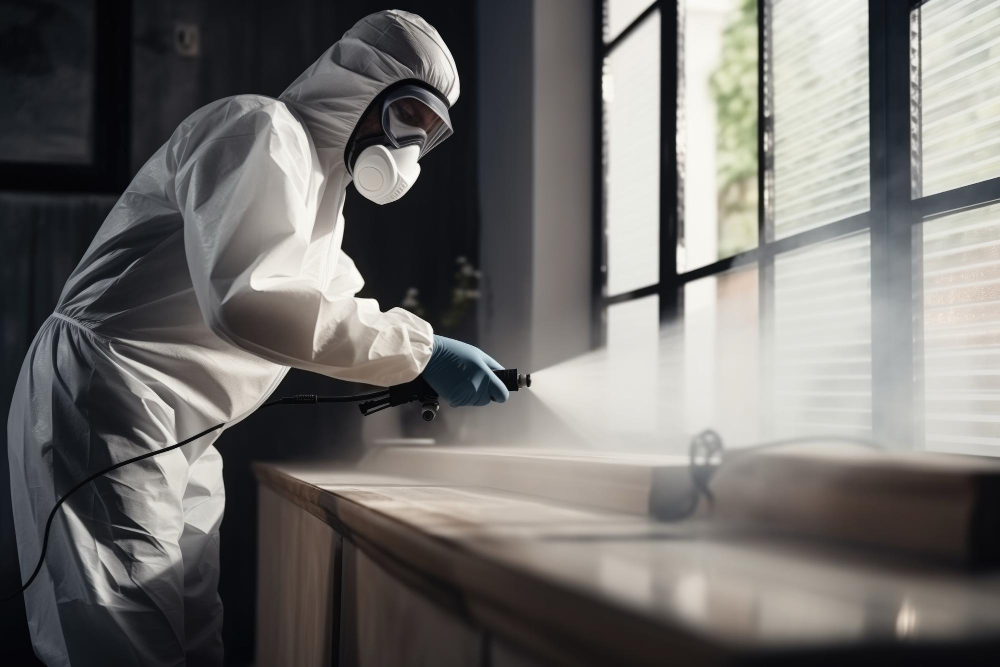
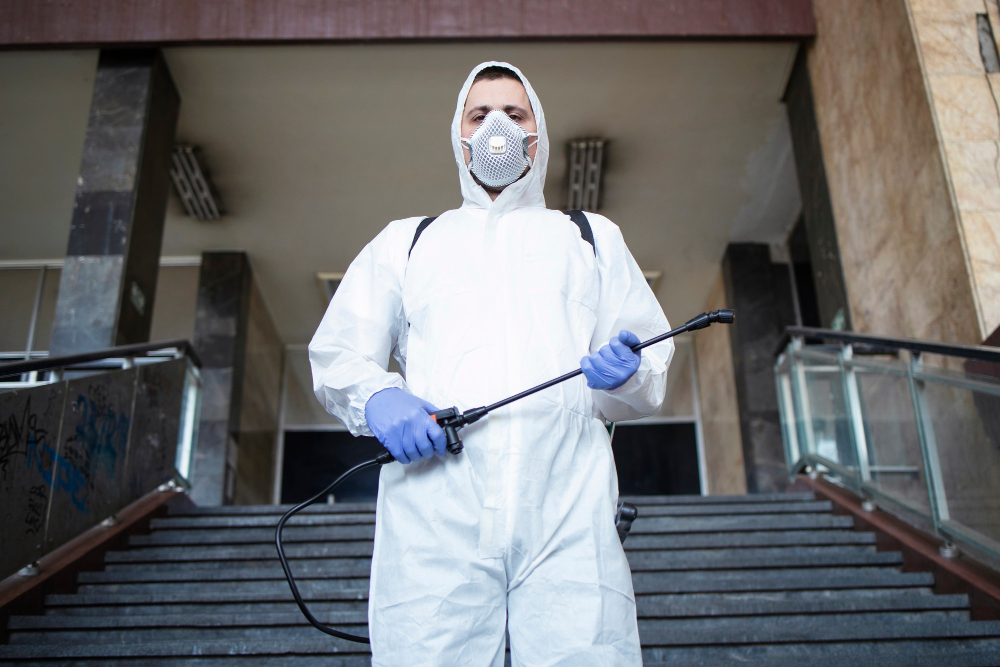
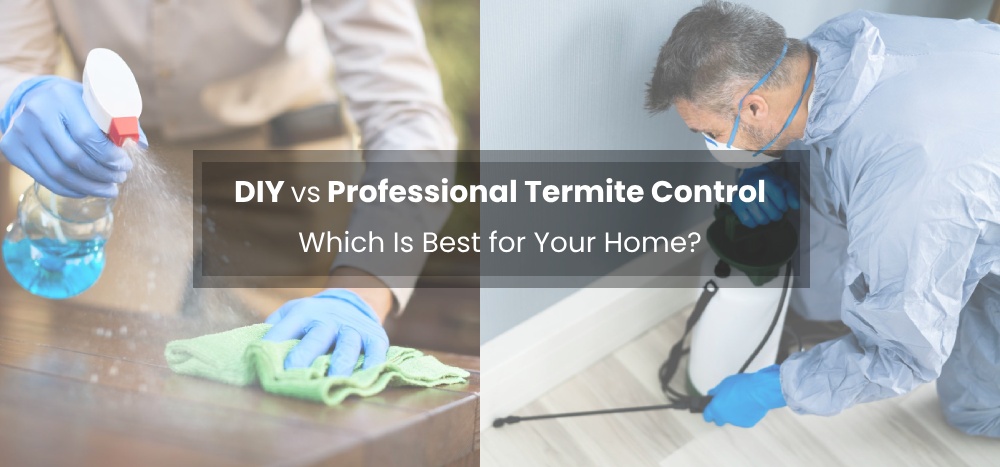 A termite infestation is perhaps the biggest challenge a homeowner may face. Often, the damage that results is caught only when it becomes open and obvious, by which time the repair costs are exorbitant.
A termite infestation is perhaps the biggest challenge a homeowner may face. Often, the damage that results is caught only when it becomes open and obvious, by which time the repair costs are exorbitant.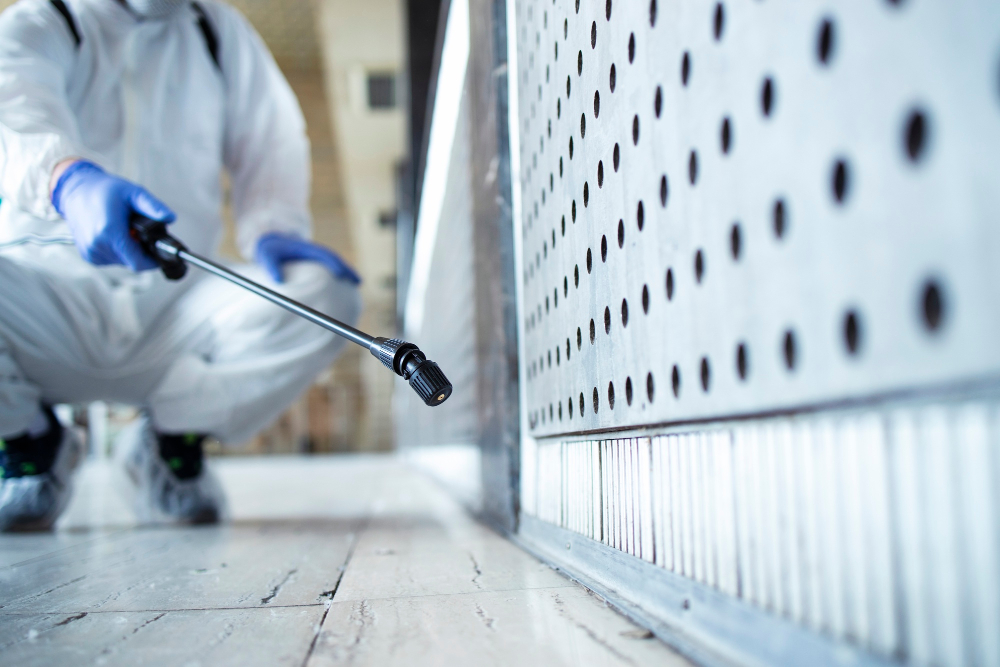 A homeowner in Northern California is constantly faced with the threat of termite infestations damaging not only what is in the house, but, in severe cases, causing structural damage to the building itself.
A homeowner in Northern California is constantly faced with the threat of termite infestations damaging not only what is in the house, but, in severe cases, causing structural damage to the building itself. 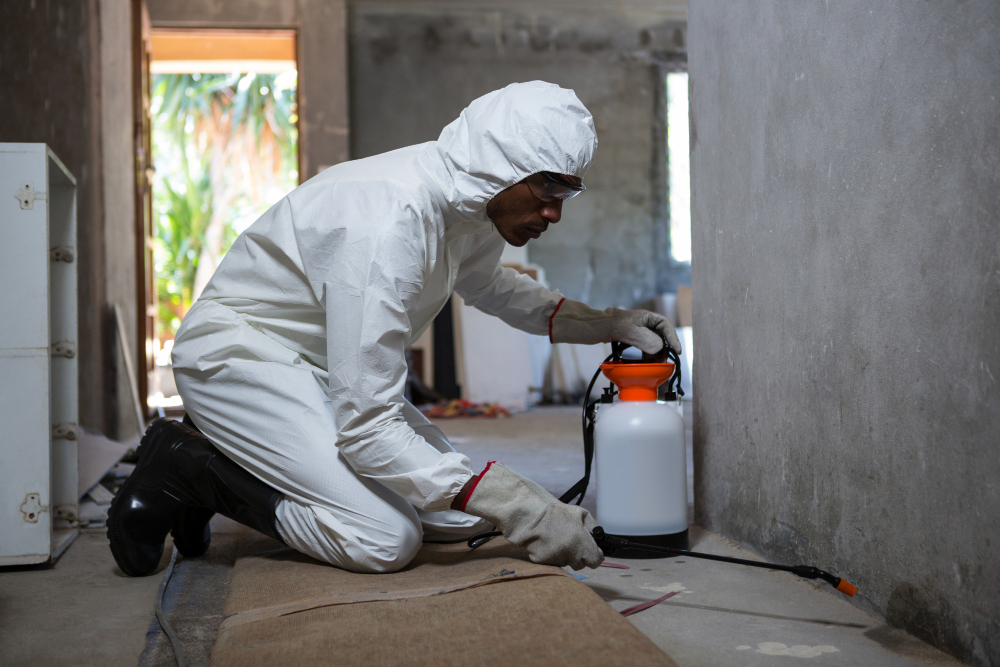 Moisture at home is common, but a bigger problem might be afoot. Excess moisture might be silently setting the stage for a termite invasion. In this blog, we explore the telltale signs of excess moisture in your home and why it’s a magnet for termites.
Moisture at home is common, but a bigger problem might be afoot. Excess moisture might be silently setting the stage for a termite invasion. In this blog, we explore the telltale signs of excess moisture in your home and why it’s a magnet for termites.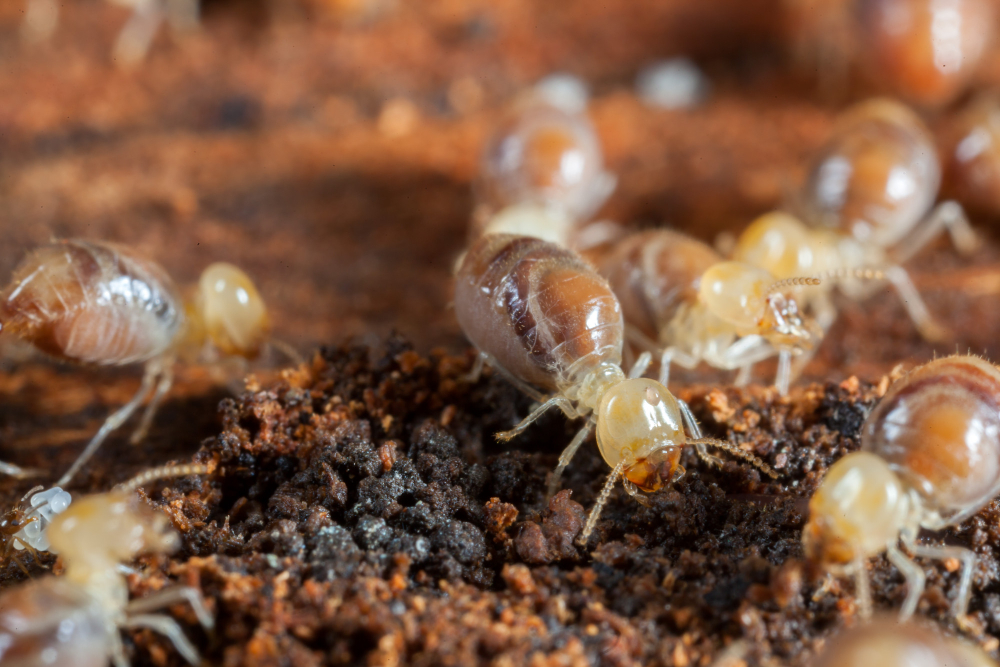 Drywood termites live within the walls and the wooden furniture they infest. Unlike their subterranean cousins, they don’t require contact with the soil to survive.
Drywood termites live within the walls and the wooden furniture they infest. Unlike their subterranean cousins, they don’t require contact with the soil to survive. 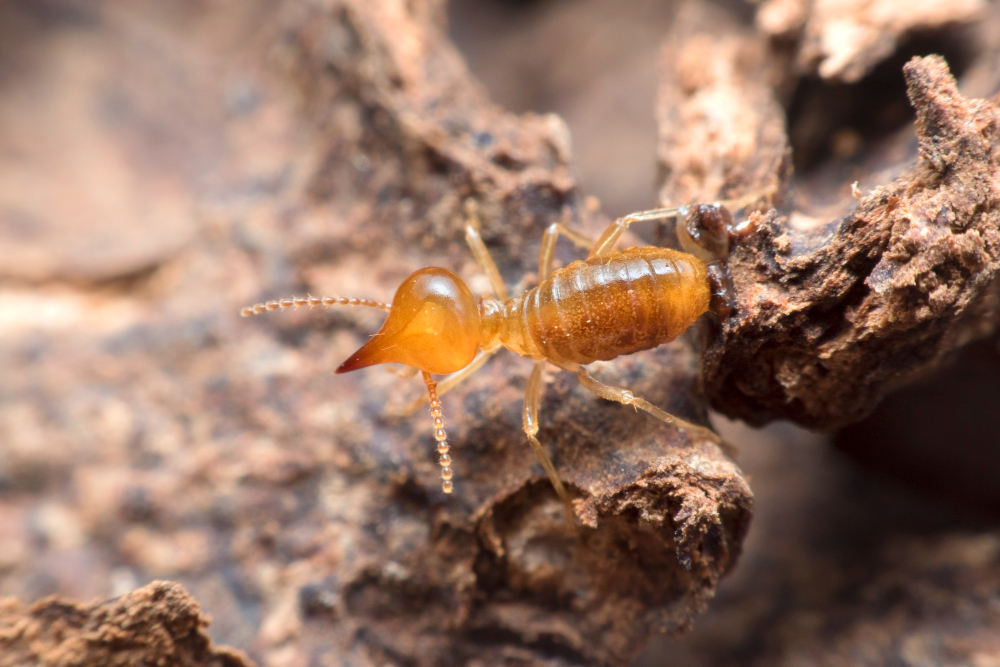 Termites, though tiny, can cause considerable damage to your property. What makes them so destructive? Why do they target our homes so voraciously? This blog helps you understand their intricate life cycle and interesting habits, unraveling why knowing about these creatures matters to homeowners.
Termites, though tiny, can cause considerable damage to your property. What makes them so destructive? Why do they target our homes so voraciously? This blog helps you understand their intricate life cycle and interesting habits, unraveling why knowing about these creatures matters to homeowners.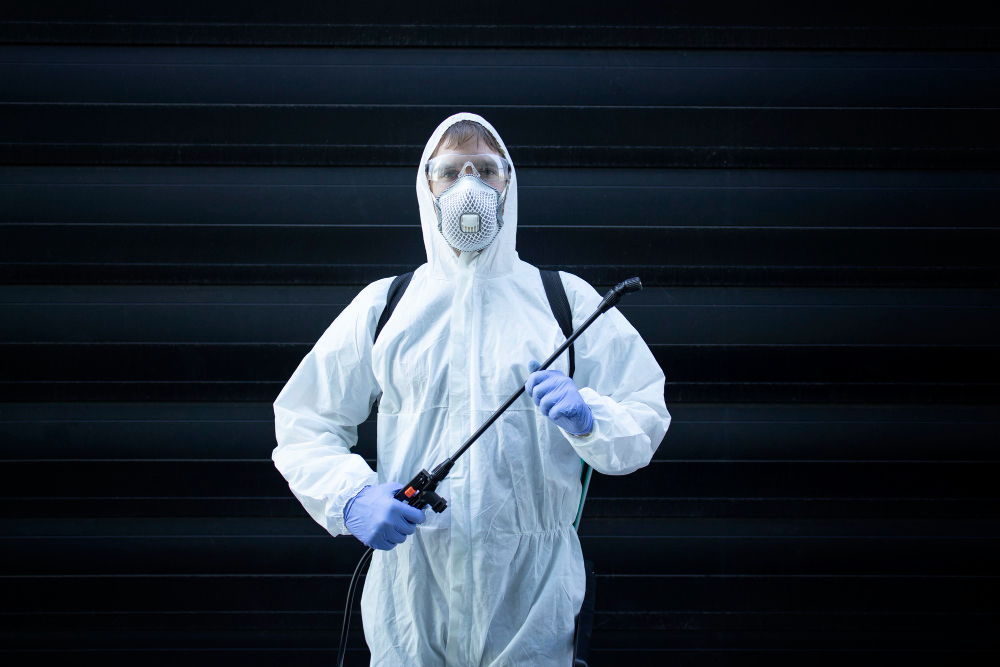 Termites, especially subterranean termites love moisture and are drawn to it like a magnet. While they feast on the cellulose in the wood, they need moisture to survive. If your house has a termite problem then your humble abode might become a silent feast for the termites
Termites, especially subterranean termites love moisture and are drawn to it like a magnet. While they feast on the cellulose in the wood, they need moisture to survive. If your house has a termite problem then your humble abode might become a silent feast for the termites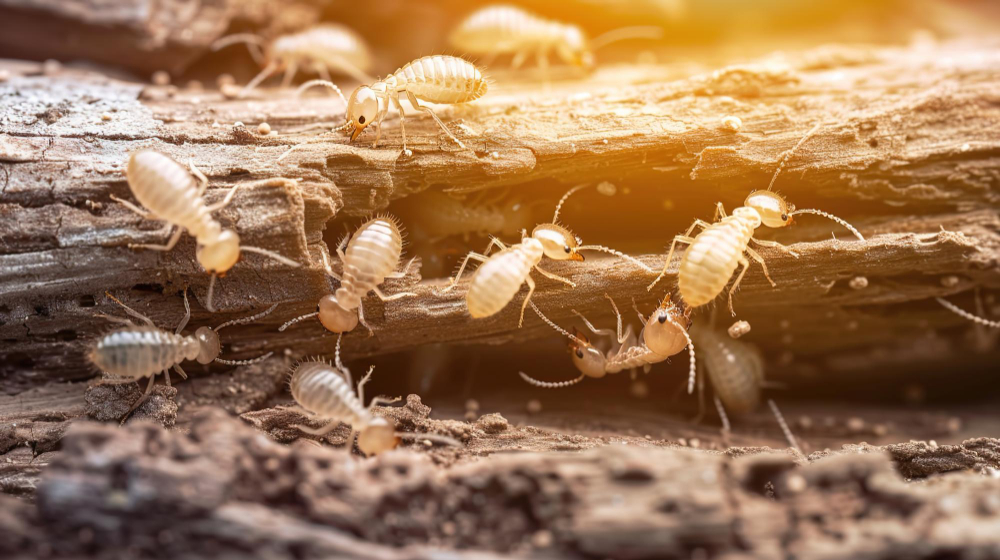 According to the National Pest Management Association (NPMA), nearly 1 in 5 bones in the U.S. is affected by termites. The staggering statistic is not about just numbers – it’s a wake-up call for homeowners across the country.
According to the National Pest Management Association (NPMA), nearly 1 in 5 bones in the U.S. is affected by termites. The staggering statistic is not about just numbers – it’s a wake-up call for homeowners across the country. Termite infestation rates in the USA also don’t paint a very pretty picture. Almost all U.S. states have termites and thus this scenario is more common than you think.
Termite infestation rates in the USA also don’t paint a very pretty picture. Almost all U.S. states have termites and thus this scenario is more common than you think.